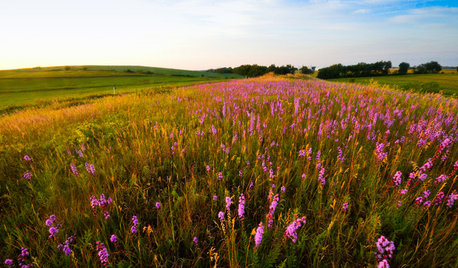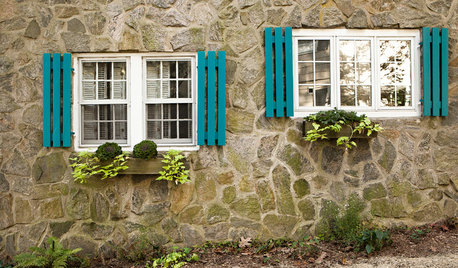need help understanding 'hybrid' seed???
lifesblessings
15 years ago
Related Stories

LANDSCAPE DESIGNTo Manage Stormwater Sustainably, Understand Your Site
Follow this guide to learn how water moves through your landscape and how best to manage it
Full Story
PETSHow to Help Your Dog Be a Good Neighbor
Good fences certainly help, but be sure to introduce your pup to the neighbors and check in from time to time
Full Story
LANDSCAPE DESIGNNative Plants Help You Find Your Garden Style
Imagine the garden of your dreams designed with plants indigenous to your region
Full Story
GARDENING GUIDESHelp Fuel the Monarch Migration With These 6 Prairie Plants
Try these nectar-rich beauties and help autumn monarchs
Full Story
MOST POPULAR7 Ways to Design Your Kitchen to Help You Lose Weight
In his new book, Slim by Design, eating-behavior expert Brian Wansink shows us how to get our kitchens working better
Full Story
FLOWERS AND PLANTSHelp Monarchs and Other Butterflies by Planting Common Milkweed
Summer-blooming Asclepias syriaca is an important larval host plant for the monarch butterfly and attracts a number of pollinating insects
Full Story
COLORPick-a-Paint Help: 11 Ways to Mine Your World for Colors
Color, color everywhere. Discover the paint palettes that are there for the taking in nature, shops and anywhere else you roam
Full Story
BUDGETING YOUR PROJECTConstruction Contracts: What to Know About Estimates vs. Bids
Understanding how contractors bill for services can help you keep costs down and your project on track
Full Story
GARDENING FOR BIRDSWhat to Know About Birds Nesting in Your Yard
Learn how to observe, record data and help ornithologists with NestWatch’s citizen science project understand bird trends
Full Story
LANDSCAPE DESIGNSecrets of a Successful Water Garden
Relax. Having a water garden is much easier once you understand the basics
Full Story





Okiedawn OK Zone 7
Related Professionals
Graham Landscape Architects & Landscape Designers · Manorville Landscape Architects & Landscape Designers · Mountain Brook Landscape Architects & Landscape Designers · Walnut Landscape Architects & Landscape Designers · Belvedere Park Landscape Contractors · College Park Landscape Contractors · Edwardsville Landscape Contractors · Galt Landscape Contractors · Tehachapi Landscape Contractors · Welby Decks, Patios & Outdoor Enclosures · Jupiter Decks, Patios & Outdoor Enclosures · Olathe Decks, Patios & Outdoor Enclosures · Southampton Decks, Patios & Outdoor Enclosures · Urbana Decks, Patios & Outdoor Enclosures · Wentzville Decks, Patios & Outdoor Enclosures